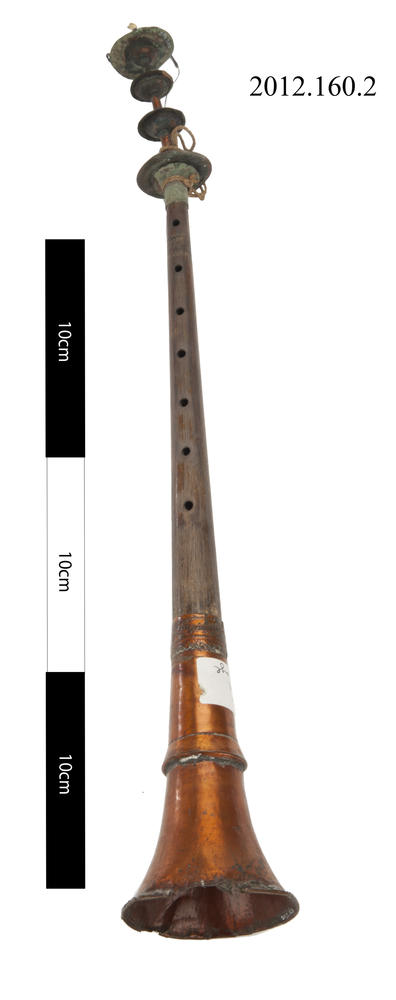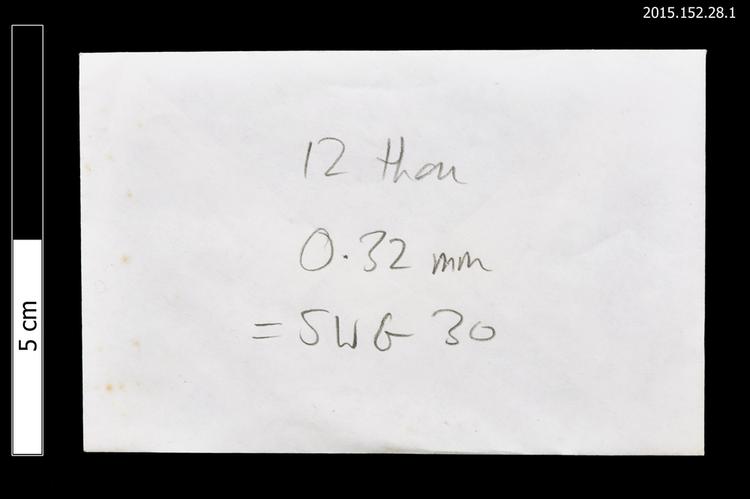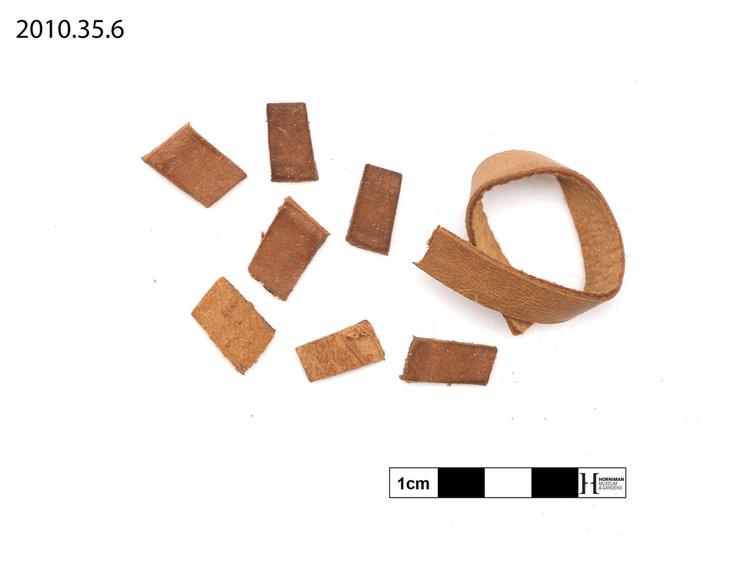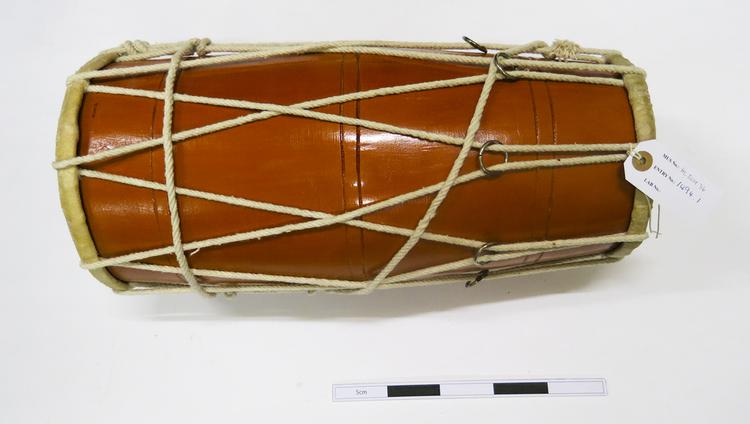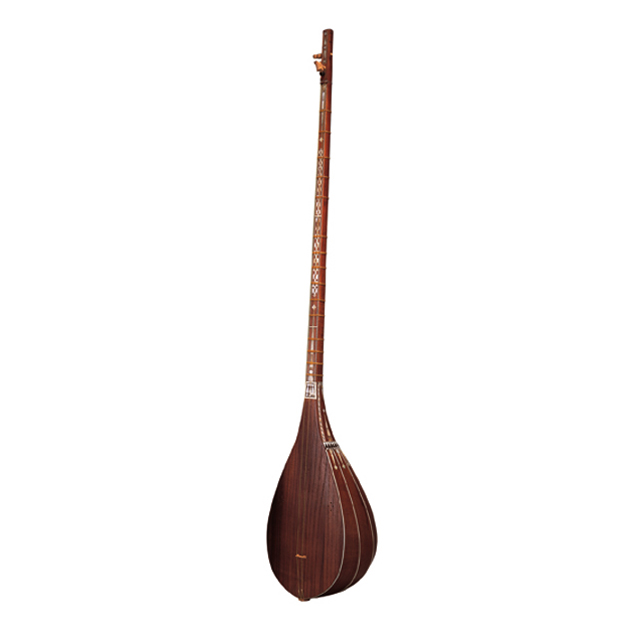
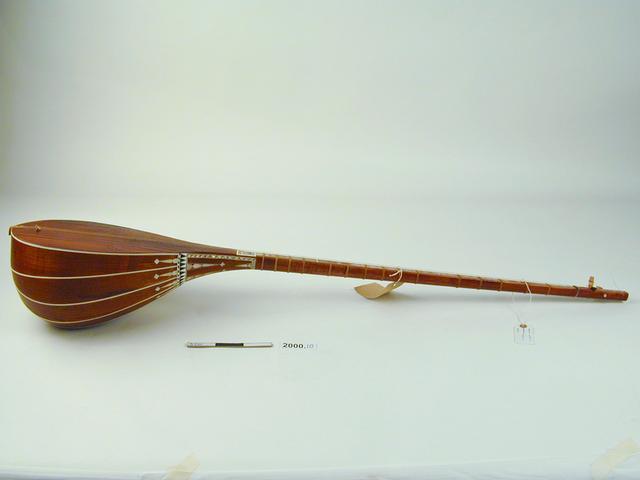
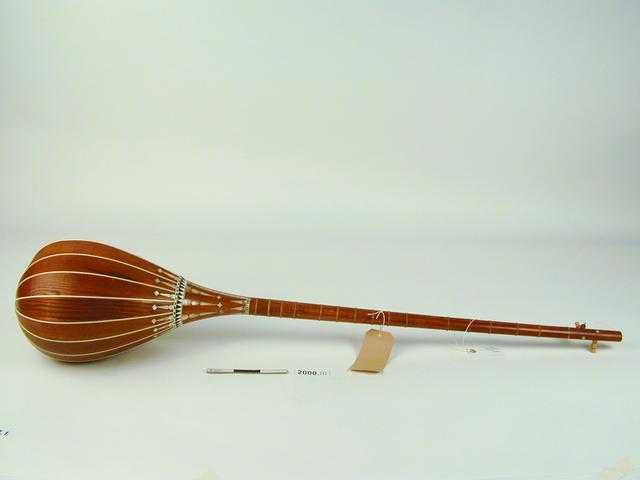
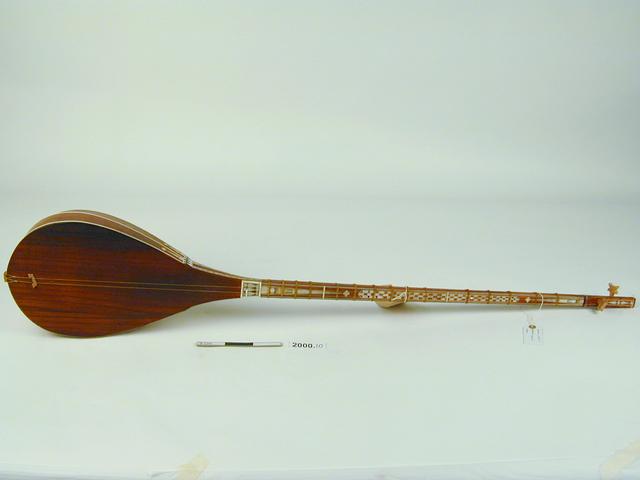
Round backed lute 'Kashgar' dutar (maker's name for type of instrument). The body of ten ribs of mulberry wood with plastic stringing and mother of pearl decoration. Apricot wood neck. Two silk strings. Eighteen gut and plastic frets.
This dutar is frequently played solo by women. It often accompanies another long-necked lute, the wire-strung tanbur, and is considered its 'kindred spirit' (hamnafas). The tanbur and dutar are played together in a number of different contexts. They may accompany songs with words from the mystical poetry of classical writers such as Alisher Navai (1441 - 1501), at the quasi-religious early morning meal for male relatives before a wedding. This dutar has a wire string inside the body to enhance its resonance, a feature introduced by a master stringed instrument maker of Tashkent, Usta Usman Zufarov, and copied by his students, among them Rihzkhon Khojakhanov.




